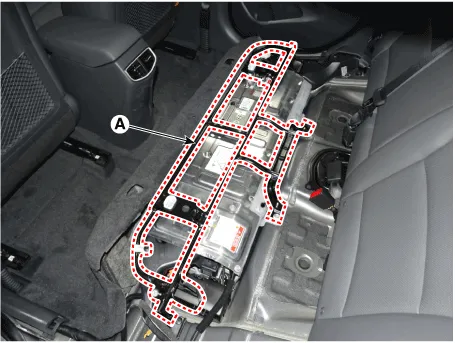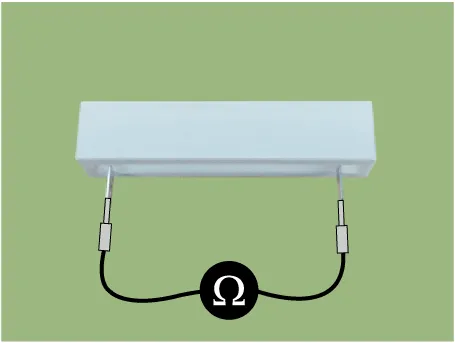Hyundai Ioniq (AE): High Voltage Battery Control System / Pre-Charge Resistor. Repair procedures
Hyundai Ioniq (AE) 2017-2022 Service & Repair Manual / Hybrid Control System / High Voltage Battery Control System / Pre-Charge Resistor. Repair procedures
| Removal |
| 1. | Shut off the high voltage. (Refer to Hybrid Control System - "High Voltage Shut-off Procedures") |
| 2. | Remove the rear seat cushion. (Refer to Body - "Rear Seat Assembly") |
| 3. | Remove the rear door scuff trim. (Refer to Body - "Door Scuff Trim") |
| 4. | Remove the upper frame (A) after loosening the mounting bolts and nuts.
|
| 5. | Remove the high voltage battery rear cover (A) after loosening the mounting bolts and nuts.
|
| 6. | Remove the inlet cooling duct. (Refer to Hybrid Control System - "Cooling Duct") |
| 7. | Disconnect the pre-charge resistor (A).
|
| Installation |
|
| 1. | Install in the reverse order of removal.
|
| Inspection |
| 1. | Remove the pre-charge resistor. (Refer to High Voltage Battery Control System - "Pre-Charge Resistor") |
| 2. | Check for continuity between the terminals using an ohmmeter.
|
Circuit Diagram
DescriptionBattery Current Sensor is integrated into the Power Relay Assembly (PRA) and measures the current of the high voltage battery during charging or discharging.
Other information:
Hyundai Ioniq (AE) 2017-2022 Service & Repair Manual: Photo Sensor. Repair procedures
Inspection1.Turn the ignition switch ON.2.Connect the GDS.3.Emit intensive light toward the photo sensor using a lamp, and check the output voltage change.4.The voltage will rise with higher intensive light and reduce with lower intensive light.1. Auto light signal2.
Hyundai Ioniq (AE) 2017-2022 Service & Repair Manual: Duct Sensor. Components and components location
C
Categories
- Manuals Home
- Hyundai Ioniq Owners Manual
- Hyundai Ioniq Service Manual
- Hybrid Vehicle Interior Overview
- Plug-in Hybrid Vehicle Engine Compartment
- Hybrid Vehicle Engine Compartment
- New on site
- Most important about car
Copyright © 2025 www.hioniqae.com - 0.0118






